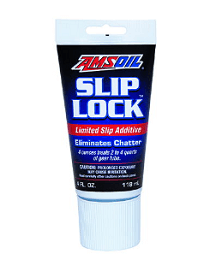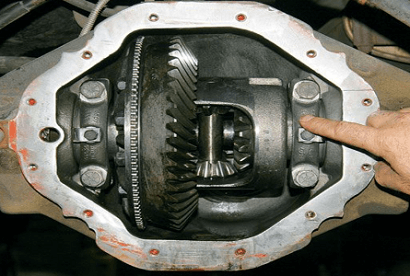If you don’t add limited slip additive, your vehicle’s differential may experience increased friction and wear. This can result in poor traction, reduced stability, and potential damage to the differential components.
Limited slip additive is an essential component for maintaining the smooth operation of your differential, preventing excessive slippage between the wheels, and ensuring optimal performance and longevity of your vehicle’s drivetrain.
By neglecting to add the limited slip additive, you risk compromising the overall handling and safety of your vehicle, particularly in situations where traction is crucial, such as slippery or uneven road surfaces.
Therefore, it is important to follow the manufacturer’s recommendations and include the appropriate amount of limited slip additive when servicing your vehicle’s differential.
The Role Of Limited Slip Differential In Vehicle Performance
In vehicles, the limited slip differential (LSD) plays a crucial role in ensuring optimal performance. It is responsible for distributing power between the drive wheels to enhance traction and stability, especially during cornering or on slippery surfaces.
Definition And Function Of Limited Slip Differential
A limited slip differential is a mechanical device that allows both drive wheels to receive power while preventing excessive wheel spin or slippage. Unlike an open differential, which allows power to be transferred to the wheel with the least resistance, an LSD actively balances power distribution for improved handling and acceleration.
How Limited Slip Differential Works:
- When one wheel begins to lose traction, the LSD transfers torque to the wheel with the most grip, reducing wheel spin.
- This ensures that power is not wasted on a spinning wheel, allowing the vehicle to maintain forward motion more effectively.
- By reducing wheel spin, an LSD enhances traction, stability, and ultimately, the overall performance of the vehicle.

Overall, the limited slip differential is an essential component that contributes to the superior handling and control of a vehicle, especially in challenging driving conditions. Ensuring the proper maintenance of the LSD, including using a limited slip additive, is essential to avoid potential issues and maximize its performance benefits.
What Happens When Limited Slip Additive Is Not Added
Not adding limited slip additive to your differential can have negative consequences for its performance and overall longevity. When limited slip additive is not added, it can result in increased wear and tear on the differential components.
The limited slip differential relies on friction to distribute torque between the wheels, and without the additive, this friction is compromised. As a result, there is a higher risk of costly damage to both the differential and the drivetrain.
Without the proper amount of friction modifiers, the limited slip differential may not function as intended, leading to poor traction and reduced stability during turns and slippery conditions. This can negatively impact your vehicle’s handling, especially in off-road or high-performance situations where the limited slip differential is crucial.
Signs Of Limited Slip Differential Issues
Signs of Limited Slip Differential Issues:
If you notice strange noises and vibrations coming from the differential of your vehicle, it could be a sign of limited slip differential issues. These issues may result from not adding a limited slip additive to the differential fluid. Without the additive, the clutch packs within the limited slip differential may not engage properly, leading to noise and vibrations.
Additionally, poor traction and handling on wet or slippery surfaces can be a direct consequence of not adding a limited slip additive. The differential needs the friction modifiers present in the additive to provide the necessary traction to both wheels, particularly in low-traction conditions.
Furthermore, difficulty in turning or maneuvering the vehicle may be another indication of limited slip differential issues. If the differential is not functioning correctly due to the lack of an additive, the wheels may not distribute power evenly, causing difficulty in steering.
The Benefits Of Adding Limited Slip Additive
Adding a limited slip additive to your vehicle’s differential can offer a range of benefits. The most significant advantage is an improved performance and stability during turns and cornering. The additive helps distribute power more evenly between the wheels, preventing excessive wheel spin and ensuring better grip on the road.
Furthermore, the addition of a limited slip additive provides enhanced traction and handling on uneven or low-traction surfaces. This is particularly useful in off-road conditions or during winter driving when roads can be slippery.
Moreover, using a limited slip additive can result in an extended lifespan of the components in the limited slip differential. By reducing excessive wear on the gears and other internal parts, the additive helps to maintain the overall health and functionality of the differential, potentially saving you from costly repairs in the long run.
Overall, adding a limited slip additive is a simple and effective way to enhance your vehicle’s performance, stability, and longevity, making it a worthwhile investment.
How To Add Limited Slip Additive To Your Vehicle
In order to maintain optimal performance and protect your vehicle’s differential, it is crucial to regularly add limited slip additive. Neglecting to add this additive can lead to a variety of issues and potential damage to your vehicle.
When it comes to adding limited slip additive to your vehicle, there are a few important steps to follow. First and foremost, it is important to determine the recommended dosage and application method. This information can typically be found in your vehicle’s owner manual or by consulting a professional mechanic.
To add the limited slip additive, you will need to locate the differential and remove the fill plug. This will allow you to access the fluid inside the differential. Using a funnel, carefully pour the recommended amount of limited slip additive into the differential. Once the additive has been added, replace the fill plug and ensure it is securely tightened.
In order to maintain optimal performance, it is recommended to regularly add limited slip additive to your vehicle. The frequency of additive application will depend on the specific vehicle and driving conditions. It is important to consult your vehicle’s owner manual or a professional mechanic to determine how often the additive should be added for your particular vehicle.
Frequently Asked Questions On What Happens If You Don’t Add Limited Slip Additive
What Happens If You Don’t Add Limited Slip Additive?
Without adding a limited slip additive, your vehicle’s differentials may experience excessive friction and wear, leading to decreased performance and potential damage. Limited slip additives provides the necessary lubrication to ensure smooth operation and prevent metal-on-metal contact in your vehicle’s drivetrain.
How Does Limited Slip Additive Work?
Limited slip additive contains special friction modifiers that enhance the performance of limited slip differentials. It reduces the excessive friction between the clutch plates or discs, allowing them to transmit power more efficiently and evenly between the drive wheels. This helps improve traction, stability, and overall drivability of your vehicle.
Can You Drive Without Limited Slip Additive?
Technically, you can drive without a limited slip additive, but it is not recommended. Without the additive, the limited slip differential may not function properly, leading to reduced performance, increased tire wear, and potentially damage to the differential. Adding the recommended amount of limited slip additive is crucial to ensure optimal performance and longevity of your vehicle’s drivetrain.
Should I Add Limited Slip Additive During Every Oil Change?
It is not necessary to add limited slip additive during every oil change. However, if you have recently changed the differential fluid or if you notice any signs of limited slip differential performance issues such as chatter or wheel spin, it is advisable to add the recommended amount of limited slip additive to improve the lubrication and functionality of your limited slip differential.
Conclusion
Overall, not adding a limited slip additive can have detrimental effects on your vehicle’s performance and longevity. Without the proper lubrication and friction reduction, your differential may experience increased wear and even damage. This can lead to poor handling, decreased traction, and potential costly repairs.
To ensure optimal performance and protect your investment, adding a limited slip additive is essential. Don’t overlook this crucial maintenance step for a smooth and reliable driving experience.


Leave a Reply